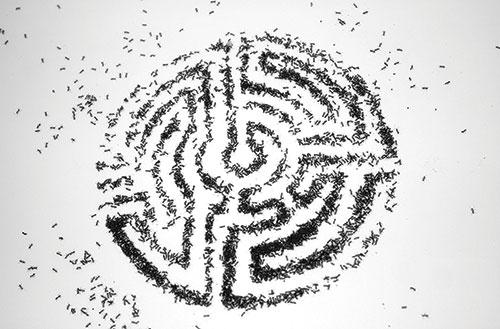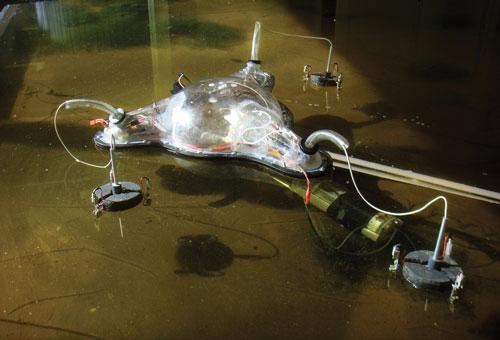.jpg)
Get a Life is a deceptive book, not because its author seeks to misdirect the reader, nor because he is in any way naive about the implications of his theories, but because the ideas it contains are so entertainingly and unthreateningly presented, you don't realise until closer examination that they have teeth - sharp ones.
This new e-book by the British-Australian art theorist Donald Brook is a compendium of papers, articles and biographical recollections that trace Brook’s developing thought from the mid 1960s to the present day. The various 'perls’ (a pun on the computer programming language), as he calls them, are strung together with chronological recollections of Brook’s many involvements with the Australian artworld over this period as well as several descriptions of other formative, informative, extraordinary, exasperating and sometimes poignant episodes and encounters.
For the last 50 years Brook has been weaving together various closely interrelated strands of conceptual analysis leading to the formulation of a body of theories with significant implications for our understanding of art, culture and perception – issues that are as relevant today as they ever were. Whether a modest e-book is the most appropriate or impactful means of disseminating these ideas remains to be seen, but it would be a mistake to conclude that the contents of this offering apply merely to the production, theory and consumption of artworks or even to the wider machinations of the artworld. A brief scan should be sufficient to persuade even the most skeptical reader that this book is packed with ideas, thought-provoking challenges to orthodoxy and several powerful conceptual tools that could easily keep a diligent theorist employed for a very long time indeed.
Such glowing remarks beg a glaring question: if Brook has been a prominent and widely published member of the Australian artworld and his ‘perls’ have frequently been dispersed in international waters then why is he almost completely unknown outside Australia? It is tempting to jump to some scathing conclusions here about the narrow focus of the Anglo-American outlook but while there is probably some truth in this accusation I suspect that the factors involved are more complex.
The period of Brook’s principal activity coincides with one in which Continental philosophy in general, and post-structuralism in particular, have held considerable attractions for many artists and art theorists. The clear reverberations of this cultural trend can still be discerned amongst much contemporary art and art criticism, yet throughout this period Brook’s allegiances have remained firmly within the Analytic tradition, a tradition known more for its asceticism and restraint than its ability to enthrall, entertain or even to mystify. The artworld isn’t exactly renowned for its preoccupation with clarity, conceptual precision and disciplined enquiry and this presents a difficulty for any theorist aligned more with Wittgenstein, Ryle and J. L. Austin than Barthes, Derrida or Merleau-Ponty. This is not to say that Brook’s writings are arid tracts with humble ambitions, quite the reverse, but what it does mean is that his rejection of much that is held sacred both within the Continental as well as the Analytic traditions of philosophy leaves him with few allies in the philosophy camp. Little wonder then that he continues to describe himself as an artist and art theorist. But this also inevitably puts him into conflict with advocates of the transcendence of art or its intrinsic alterity and ineffability. Brook’s claims are at once more substantial and more insightful and by diligent means he takes the careful reader on a journey that leads to some extraordinarily revealing realisations about the intimate and inextricable relations between representation, perception art and culture.
One of the most important additions to the toolkit of any bona fide pearl hunter is an implement for levering apart the two halves of shells that stubbornly conceal their contents. Over the years Brook has developed an uncanny knack of driving a critical wedge between what are commonly regarded as indivisible entities, of making distinctions where only ambiguity reigns. In the 1960s he began to focus his attention on a curious division commonly encountered in commentaries on sculpture. In the paper Perception and the Critical Appraisal of Sculpture (1969) Brook describes how commentators often adopt one of two distinct forms of descriptive strategy that he defines as ‘Object Accounts’ or ‘Picture Accounts’. It turns out that these two approaches are the linguistic face of two radically different procedures of non-verbal representation, procedures that inform our everyday speech to a significant degree. Moreover, Picture Accounts are the result of cultural innovations of the kind exemplified by the 15th-century discovery of perspective and are centrally implicated in the perplexities of many optical illusions. Many such techniques that we now take for granted were completely unknown in ancient times: for example, the knack of using blue pigments to depict aerial perspective. Only in recent years has it been confirmed – thus corroborating Brook’s thesis – that colour perception is significantly informed by the cultural emergence of skills and materials capable of enhancing our genetically inherited capacities.
The emphasis on cultural innovation in Brook’s thought is crucial and leads to several other important insights, perhaps the most prominent of which is a theory of what art actually is: an old canard perhaps but one that finds new life under Brook’s discriminating lens. Brook argues that the artworld has a vested interest in claiming that art is a unique commodity that inheres only in works of art, whereas art is in fact the emergence of previously unexpected skills of human ingenuity that, once discovered, can subsequently be repeated and refined. Computer games, perspective, nicotine patches, photographs, particle accelerators, sculptures and even new forms of crime are all products of art. Whether these artefacts of art will be accepted by the artworld as works of art is, of course, a question that actually has very little to do with art. Furthermore, what follows, as Brook is quick to clarify, is the realisation that there is no such thing as art history, only the "construction of a rag-bag of stories about the ways in which certain loosely related cultural kinds have emerged, have changed, and have eventually been superseded".
The arguments are more subtly nuanced than a brief summary can possibly elucidate but it should be apparent that this e-book has a lot to offer anyone interested in getting to grips with issues that have stymied philosophers and art theorists for centuries. Theories of all kinds should be measured by their ability to enable insights and to explain puzzles that have so far eluded our best efforts. Ideally, they should also be clear and the examples they provide, vividly accessible. Get a Life succeeds admirably in doing so and into the bargain we also get several other gems including one of the most ludicrously funny yet shockingly chilling recollections ever to have graced the pages of a book of theory. Depravity in Wharfdale is a masterpiece of storytelling that will leave you breathless with its laughable grotesquery.
Brook can certainly spin a yarn, but even though Get a Life is frequently entertaining his intention is clearly not to regale us nor to showcase his linguistic or critical prowess. This book provides an opportunity for the close scrutiny of radical ideas that are in need of serious critical attention. Inevitably, there are times where the measured discussion betrays a hint of irritation at the paucity of critical reception of his work, but it is clear that Brook has more pressing repercussions to explore than to become embroiled in petty bickering or bitterness.
Get a Life is an immensely intelligent book. It is witty but never cocky, eloquent but never showy, insightful but never boastful, and challenging but never laboured. Of course, you will want to draw your own conclusions. I can only recommend that you get a copy.
Get a Life is available on the Artlink website in digital and hard copy. http://www.artlink.com.au/shop/books/












